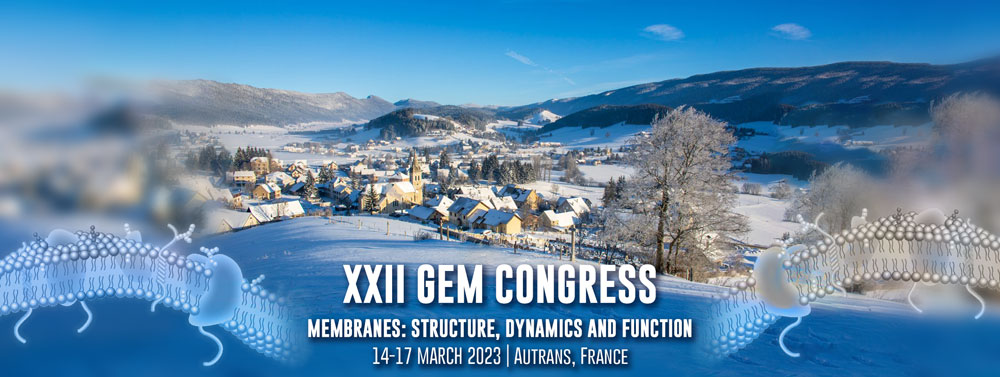Speaker
Description
Phospholipid-porphyrin conjugates (PL-Por) are amphiphilic scaffolds that consist of porphyrin derivatives grafted to a lysophosphatidylcholine backbone 1-4. Owing to their structural similarities with phospholipids, several PL-Por conjugates have shown to be able to self-assemble into liposome-like assemblies exhibiting unique photophysical properties compared to their monomeric counterparts. For these reasons PL-Por conjugates are considered nowadays as versatile building blocks to design supramolecular assemblies with multifunctional properties and thus their application in photodynamic therapy, photothermal therapy, photoacoustic imaging and photo-triggerable release properties [1-3]. However, little is known about the impact of their structure on their 2D phase behavior at the air/water interface, their assembling properties, their optical properties as well as on their photothermal and photodynamic activities.
In this work, we synthesized six new PL-Por conjugates exhibiting different alkyl chain lengths in the sn2 position of C16 Lysophosphatidylcholine and linked via peptidic bond to two types of porphyrin derivatives; either pheophorbide-a (PhxLPC) or pyropheophorbide-a (PyrxLPC) 5. By combining a variety of experimental techniques with molecular dynamics simulations, we investigated the 2D phase behavior at the air/water interface, the thermodynamic, the optical properties and the structure of the PL-Por either self-assembled or when incorporated in lipid bilayer membranes which exhibit different fluidity 6. Finally, the photothermal and photodynamic efficiencies of these assemblies were assessed on planktonic bacteria and their biofilms7.
Our results demonstrated that whereas changing the porphyrin moiety controlled the packing of the monolayer and thus the formation of organized domains, the chain length dictated the structure of the formed domains. Finally, all of the conjugates were able to form supramolecular assemblies with bilayers structures and exhibit different photothermal and photodynamic activities against Gram + and Gram - bacterial planktonic cultures and their biofilms depending on their chemical structure of the PL-Por conjugates.
References
[1] J. F. Lovell, C. S. Jin, E. Huynh, H. Jin, C. Kim, J. L. Rubinstein, W. C. Chan, W. Cao, L. V. Wang, G. Zheng Nat. Mater. 2011, 10, 324-332.
[2] J. Massiot, W. Abuillan, O. Konovalov, A. Makky Biochim. Biophys. Acta, Biomembr. 2022, 1864, 183812.
[3] J. Massiot, V. Rosilio, N. Ibrahim, A. Yamamoto, V. Nicolas, O. Konovalov, M. Tanaka, A. Makky Chem. - Eur. J. 2018, 24, 19179-19194.
[4] J. Massiot, V. Rosilio, A. Makky J. Mater. Chem. B. 2019, 7, 1805-1823.
[5] L.-G. Bronstein, P. Cressey, W. Abuillan, O. Konovalov, M. Jankowski, V. Rosilio, A. Makky J Colloid Interf Sci. 2022, 611, 441-450.
[6] L.-G. Bronstein, Á. Tóth, P. Cressey, V. Rosilio, F. Di Meo, A. Makky Nanoscale. 2022, 14, 7387-7407.
[7] P. Cressey, L.-G. Bronstein, R. Benmahmoudi, V. Rosilio, C. Regeard, A. Makky International Journal of Pharmaceutics. 2022, 623, 121915.
| Session | Nanomedecine |
|---|

